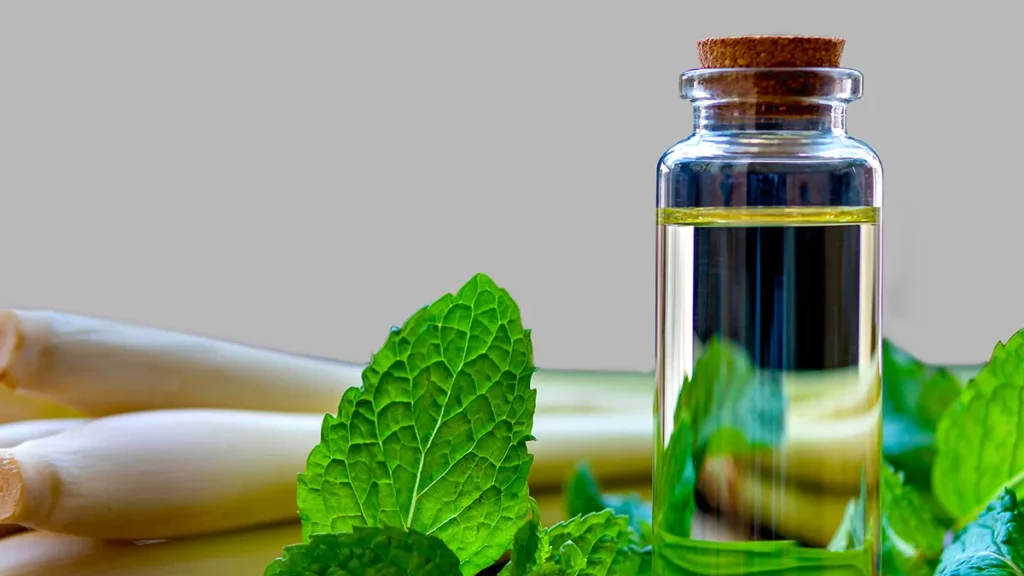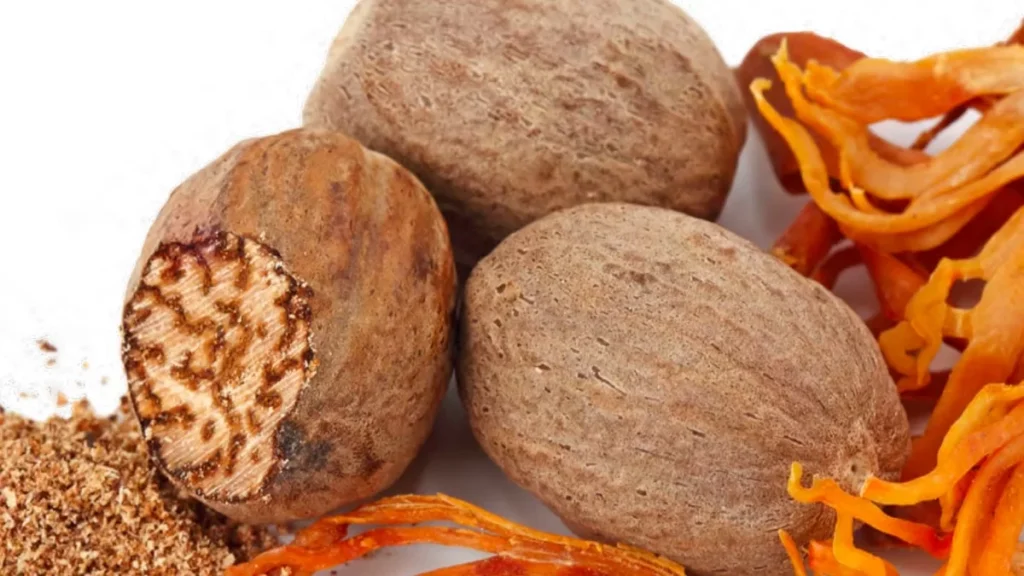Candy isn’t just about sugar and sweetness—it’s a carefully crafted experience that excites our taste buds and evokes childhood nostalgia. Whether it’s the fruity burst of a gummy bear or the rich complexity of caramel, candy flavors are what make it irresistible.
But have you ever wondered how those flavors are created? The answer lies in a fascinating blend of chemistry, creativity, and food science.
Behind every bite of candy is a meticulous process that transforms raw ingredients into the playful flavors we know and love. From natural extracts to synthetic flavor molecules, candy flavors are developed by expert food scientists who balance taste, texture, and aroma to deliver a delightful experience.
In this article, we’ll explore the science behind how candy flavors are created and the techniques that make each flavor distinct.
What Are Candy Flavors?
At its core, candy flavor is the essence that defines the overall sensory experience of eating a sweet treat. It’s not just about sweetness—flavor combines taste, aroma, and even texture to create the distinct profile of each candy.
Whether it’s the refreshing zing of mint, the boldness of berry, or the subtle warmth of vanilla, these candy flavors result from a precise combination of ingredients and chemical compounds.
In candy production, flavorings are typically categorized as natural or artificial.
Natural flavors are derived from plant and animal sources—think of essential oils from citrus fruits or extracts from vanilla beans. These are popular in today’s market as consumers increasingly seek products with fewer synthetic additives.
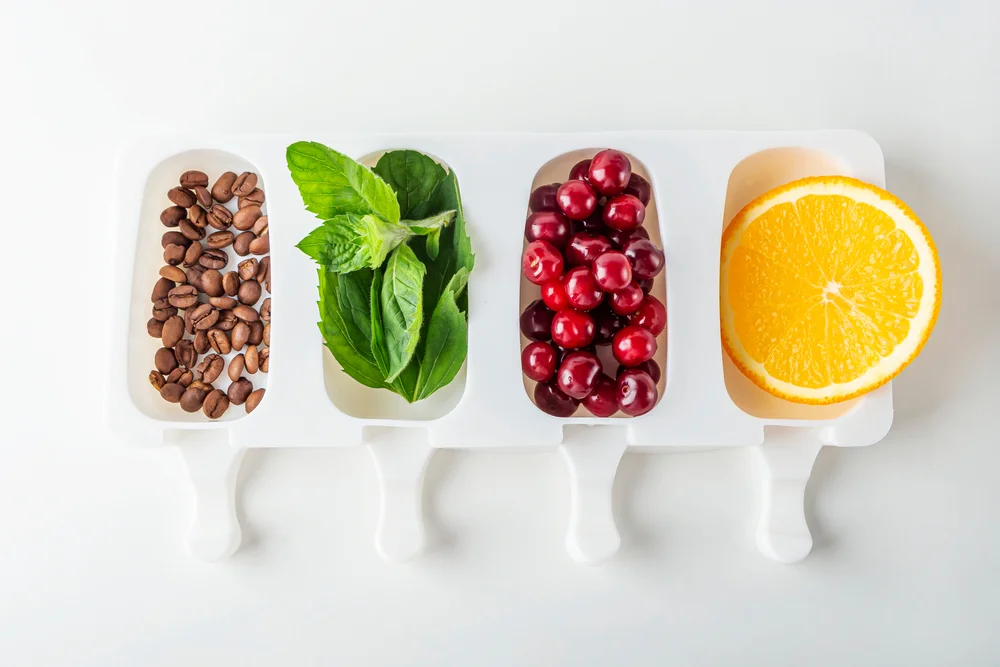
On the other hand, artificial flavors are created through chemical synthesis to mimic natural flavors. While they may not come directly from nature, they offer the advantage of being more cost-effective, stable, and consistent in large-scale production.
Understanding the balance between natural and artificial flavors is key to creating candies that taste exquisite and meet consumer preferences. Whether the goal is to evoke nostalgia with classic candy flavors or push the envelope with new, exotic tastes, the science of candy flavoring starts with choosing the right ingredients to match the desired experience.
Key Ingredients Used in Candy Flavor Creation
The creation of candy flavors begins with a careful selection of ingredients that will define the taste, aroma, and overall sensory experience of the final product. These ingredients fall into two main categories: natural flavor compounds and synthetic flavor molecules. Both play crucial roles in how candy flavors are crafted and delivered.
Natural Flavor Compounds
Natural flavorings come from plant or animal sources and are often extracted through processes like distillation or solvent extraction. Common examples include essential oils from citrus fruits, such as lemon and orange, or extracts from spices like cinnamon and vanilla. These natural compounds are prized for their authenticity and appeal to health-conscious consumers seeking clean-label products with fewer artificial additives.
However, using natural flavors in candy comes with challenges. They can be more sensitive to heat and processing conditions, requiring careful handling during production to preserve their integrity. Despite these challenges, the demand for naturally flavored candy continues to rise, driven by consumer preference for products that align with their wellness values.
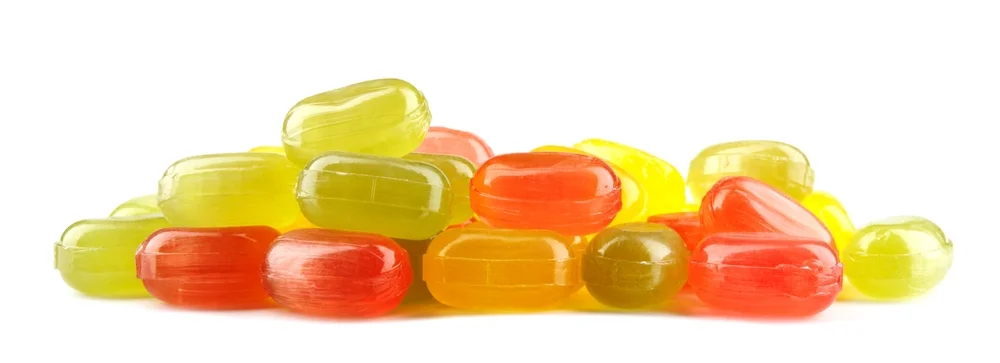
Synthetic Flavor Molecules
Synthetic flavorings, while not derived directly from nature, are carefully designed in labs to replicate the taste and aroma of natural ingredients. These molecules allow for greater control over consistency, stability, and cost in large-scale candy production.
Synthetic candy flavors can often withstand higher temperatures and maintain their potency over longer shelf lives, making them ideal for candies that require long-term storage or high-temperature processing, like hard candies.
An advantage of synthetic flavor molecules is their ability to create novel and bold flavors that may be difficult or impossible to achieve with natural ingredients alone. For instance, the sharp tang of blue raspberry or the playful mix of tropical fruit flavors often come from a combination of synthetic flavor molecules designed to excite the palate.
The Role of Sweeteners, Acids, and Flavor Enhancers
Beyond the primary flavoring agents, other key ingredients influence the overall profile of candy flavors.
Sweeteners, such as sugar, corn syrup, or alternative sweeteners like stevia, not only provide sweetness but also affect the texture and flavor balance.
Acids, like citric acid or malic acid, add a sour note to many fruity candies and sharpen candy flavors by balancing the sweetness.
Flavor enhancers, meanwhile, such as salt or MSG (monosodium glutamate), can amplify certain taste sensations, making the candy flavors more intense and enjoyable.
Together, these ingredients form the foundation of creating candy flavors, working in harmony to craft the perfect taste experience, whether it’s a classic favorite or an exciting new combination.
The Science of Taste and Flavor Perception
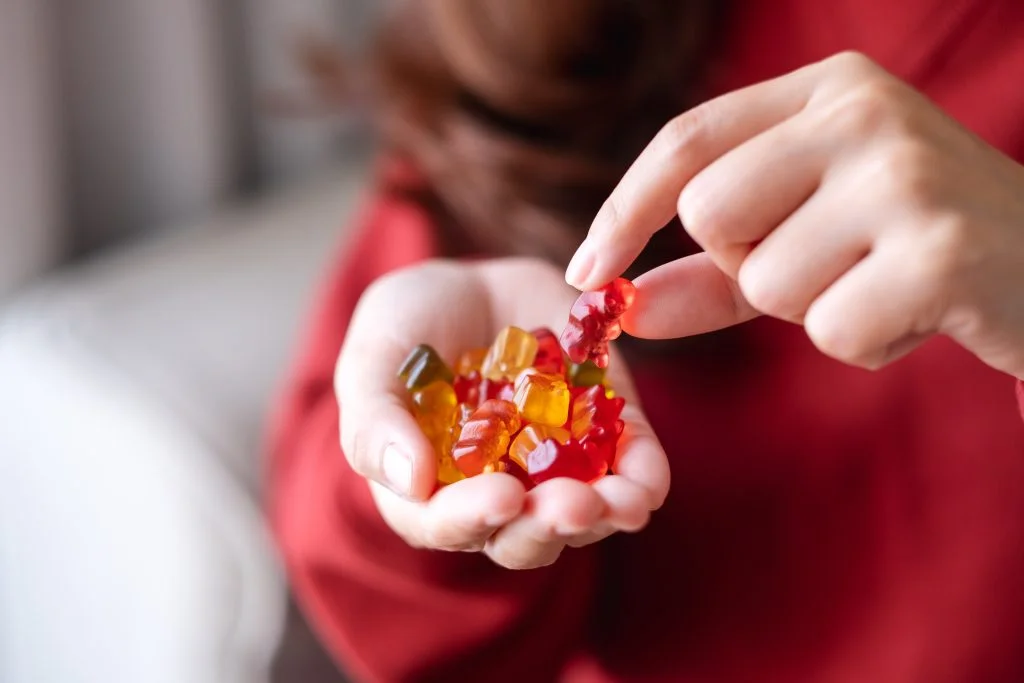
When we eat candy, we experience more than just sweetness. The flavors we perceive are the result of a complex interaction between our senses of taste and smell, as well as the texture and temperature of the candy. This multisensory experience is what makes candy flavors so engaging and memorable.
How Taste Works
Taste is primarily detected by taste buds on the tongue, which recognize five basic tastes: sweet, sour, salty, bitter, and umami. Each of these taste sensations is activated by specific molecules in food. In candy, sweetness is the dominant flavor, typically provided by sugars or sweeteners, while other tastes—like sour from acids—are used to create contrast and depth.
Taste buds send signals to the brain when they come into contact with these molecules, but they’re only one part of the flavor experience. Without the sense of smell, many candy flavors would feel flat or incomplete.
For example, if you hold your nose while eating a piece of candy, you’ll notice that the fruity or complex flavors seem muted. That’s because much of what we identify as “flavor” actually comes from our sense of smell.
The Role of Aroma in Flavor
Our sense of smell plays a crucial role in how we experience candy flavors.
Aromatic compounds in candy are detected by the olfactory receptors in the nose, both through inhaling the candy’s scent and as volatile compounds are released in the mouth during chewing. These volatile compounds contribute to what is often called the “aromatic profile” of the candy, adding complexity to the flavor beyond what the taste buds detect.
This is why candies with strong aromas, like peppermint or chocolate, often have a more pronounced and lingering flavor. The combination of taste and smell creates the complete flavor perception, with both working in tandem to deliver the rich, nuanced experience of each bite.
Texture and Temperature: Enhancing Flavor
While taste and smell are central to flavor perception, the texture and temperature of candy also play significant roles.
The texture of a candy—whether it’s hard, chewy, or smooth—affects how long the candy flavors linger in the mouth and how they are released. For example, the slow melting of a hard candy allows flavors to unfold gradually, while the rapid chew of a gummy delivers an intense, immediate burst of flavor.
Temperature also influences flavor perception. Cooler candies, like mints or ice cream-flavored treats, can enhance freshness and cooling sensations, while warmer or room-temperature candies may bring out richness and depth, as in the case of caramel or chocolate.
Flavor Delivery in Different Candy Types
Different types of candies are designed to deliver flavor in specific ways.
- Hard candies slowly release flavors as they dissolve, giving a long-lasting experience.
- Gummies and chews offer a burst of flavor with each bite.
- Chocolates provide a rich, complex taste that evolves as it melts in the mouth.
The form of the candy determines how quickly or slowly the flavor compounds are released, shaping the overall tasting experience.
By understanding how taste, smell, and texture work together, candy creators can craft flavors that deliver maximum enjoyment and leave a lasting impression. In the science behind how candy flavors are created, this multisensory approach is key to making them as dynamic and enjoyable as possible.
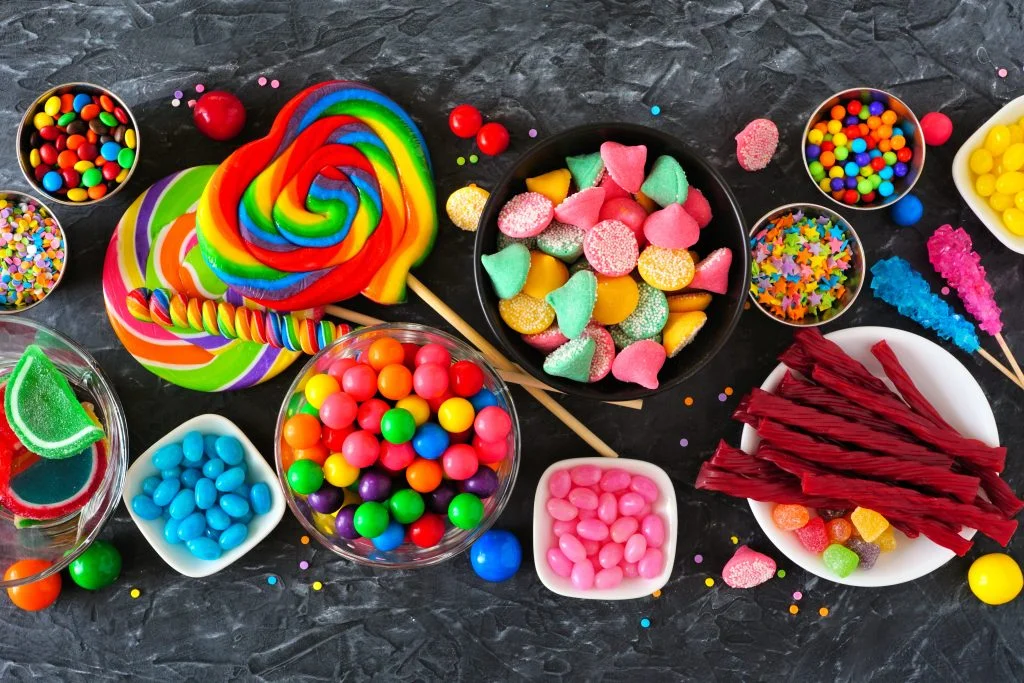
The Role of Reaction Flavors in Candy
While many candy flavors come from added extracts and compounds, some of the most complex and beloved flavors are created through chemical reactions during the cooking process.
These are known as reaction flavors, and they occur when heat, moisture, and various ingredients combine to produce new, deeper candy flavors that weren’t present initially. This process is fundamental to creating rich, indulgent candies like caramel, toffee, and chocolate.
The Maillard Reaction: A Key to Rich Flavors
One of the most important chemical reactions in candy-making is the Maillard reaction. This reaction occurs when proteins and sugars are exposed to heat, causing them to break down and recombine into hundreds of new flavor compounds.
The Maillard reaction is responsible for the toasty, nutty, and caramelized flavors that we associate with browned foods. In candy, this reaction is crucial in producing the deep, buttery richness of caramel and the complex layers of flavor found in toffee and butterscotch.
For example, in caramel-making, the Maillard reaction happens when milk proteins and sugars are heated together, resulting in that characteristic golden color and rich, creamy flavor. The longer the candy is cooked, the more intense these reaction flavors become, giving the candy a deeper, almost smoky taste.
Caramelization: Creating Sweet, Complex Notes
Another significant flavor reaction in candy is caramelization. Unlike the Maillard reaction, which involves proteins, caramelization occurs when sugar is heated to a high temperature, breaking it down into new compounds that create sweet, nutty, and slightly bitter candy flavors. This process is what gives caramel its signature golden-brown color and deep, complex flavor.
Caramelization is a vital part of making not just caramel, but also candies like pralines, nougat, and even certain types of chocolates. The balance between sweetness and bitterness achieved through caramelization adds depth to these treats, making them more than just sugary confections.
Reaction Flavors in Chocolate
Chocolate, too, benefits from reaction flavors, particularly during the roasting of cocoa beans. As the beans are heated, the Maillard reaction takes place, developing the deep, rich flavors that make chocolate so irresistible. This process brings out complex notes like nuttiness, fruitiness, and even hints of spices.
The degree to which the cocoa beans are roasted can significantly impact the final flavor of the chocolate, with lighter roasts offering more subtle flavors and darker roasts providing bolder, more intense profiles.

Balancing Reaction Flavors in Candy Production
While reaction flavors add complexity and depth to candy flavors, they must be carefully controlled. Overheating can lead to burned or overly bitter flavors, while underheating can result in weak, underdeveloped tastes.
Skilled flavorists and candy makers know how to strike the perfect balance, using temperature, cooking time, and ingredient ratios to create rich, nuanced candy flavors without crossing into bitterness.
Ultimately, reaction flavors are what set certain candies apart, elevating them from simple sweets to gourmet treats. Whether it’s the golden caramel notes in a hard toffee or the subtle roast in a piece of dark chocolate, these flavors provide a depth and complexity that make the candy experience even more enjoyable.
Flavor Formulation: Combining Art and Science
Creating the perfect candy flavor isn’t just about following a recipe; it’s a careful blend of creativity and scientific precision.
Candy flavor formulation is a process that combines art—the ability to craft unique and appealing flavor combinations—and science—the understanding of how different compounds interact to achieve the desired taste.
It’s this fusion of disciplines that allows candy makers to develop flavors that not only taste delicious, but also align with consumer preferences and production requirements.
The Role of Food Scientists in Flavor Development
Food scientists play a crucial role in developing candy flavors. Their expertise in chemistry, biology, and sensory analysis helps them understand how various ingredients work together to create a cohesive flavor profile. Whether it’s crafting a classic flavor like cherry or experimenting with something new and exotic, the process involves a series of precise steps.
It all starts in the flavor lab, where scientists use a range of natural extracts, synthetic compounds, and enhancers to formulate a base flavor.
Each ingredient is carefully measured and tested to ensure that it complements the others, creating a harmonious balance of taste, aroma, and mouthfeel. This is where art comes into play—designing flavors that match the candy and stand out in the market.

Sensory Analysis and Testing
Once the initial flavor formulations are created, they undergo rigorous sensory analysis. Panels of trained testers sample the candy, providing feedback on everything from the intensity of the flavor to its longevity and how well it matches the intended experience.
Scientists rely on this feedback to fine-tune the candy flavors, adjusting ingredients, concentration levels, or even the candy’s texture to achieve the perfect result.
Flavor development also involves testing how the flavor holds up over time. Factors like temperature, storage conditions, and packaging can impact the candy flavors, especially in candies with long shelf lives.
Ensuring flavor stability is critical, as even a slight change in the formula can alter the taste experience for consumers.
Customization for Different Audiences
The process of flavor formulation often involves tailoring flavors for specific target audiences. For example, candy flavors intended for children tend to be bright, sweet, and familiar, like bubblegum, strawberry, or watermelon. On the other hand, adult consumers might prefer more complex candy flavors, such as dark chocolate with sea salt or spicy mango.
Additionally, regional preferences come into play. A flavor that is popular in one part of the world might not have the same appeal in another. For example, sour candies might be more popular in Western markets, while floral or tea-infused flavors might resonate more with Asian consumers.
Food scientists consider these factors when designing flavors that will succeed in specific markets.
Additional Reading: Flavor Focus: Mango Habanero
Balancing Flavor with Texture and Appearance
Flavor formulation doesn’t happen in isolation—it must also work harmoniously with the candy’s texture and appearance.
A fruity, tropical flavor will have a different impact in a gummy versus a hard candy, as the texture affects how the flavor is perceived.
The color of the candy also plays a psychological role, as consumers often expect certain colors to correspond with specific flavors (e.g., red for cherry or strawberry).
Achieving the perfect balance between flavor, texture, and appearance requires both creativity and scientific understanding. The goal is to craft a product that delivers an enjoyable sensory experience from the moment the consumer sees the candy to the last bite.
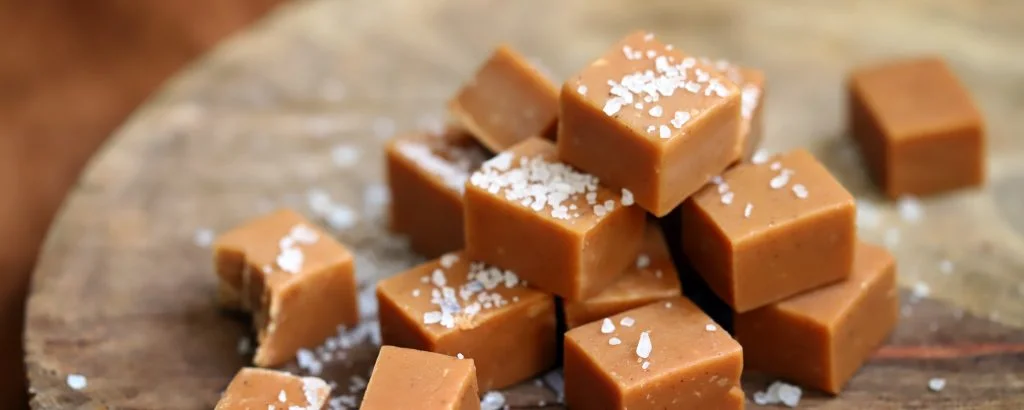
The Art of Creating New, Trend-Driven Flavors
In today’s rapidly evolving market, flavor formulation is also about anticipating and responding to consumer trends. New and exotic flavor combinations, such as chili-lime, salted-caramel, or lavender-honey, are gaining popularity, driven by consumer demand for more adventurous and globally inspired options. Food scientists and flavorists use their creativity to explore these trends while ensuring the flavors remain enjoyable and well-balanced.
Ultimately, the process of candy flavor formulation is an intricate dance between art and science. It’s about understanding the chemistry of taste while also tapping into the creativity needed to make flavors that delight and surprise.
By combining these elements, candy makers can craft flavors that not only meet expectations but exceed them, creating memorable treats that stand the test of time.
Challenges in Candy Flavor Development
Crafting the perfect candy flavor involves more than just finding the right combination of ingredients. Candy flavor development presents unique challenges that require a profound understanding of chemistry, food science, and consumer preferences.
From maintaining flavor stability to overcoming ingredient interactions, each step of the process requires careful consideration to ensure that the final product delivers a consistent and enjoyable experience.
1. Flavor Stability in Different Candy Types
One of the primary challenges in candy flavor development is ensuring that the flavor remains stable and consistent across different types of candy. Hard candies, gummies, chocolates, and chews all have different properties that influence how flavors are perceived and how long they last.
For example, in hard candies, flavors are released gradually as the candy dissolves, which requires the flavor compounds to withstand high temperatures during production without breaking down.
On the other hand, soft candies like gummies release flavor quickly with each chew, which means the flavors need to be intense but not overwhelming. Achieving the right flavor delivery for each candy form requires precise adjustments to the flavor formulation.
2. Heat and Production Process Challenges
Candy production often involves high temperatures, especially in processes like boiling sugar for hard candies or caramelization. These temperatures can alter or degrade certain flavor compounds, particularly delicate natural extracts or essential oils.
As a result, food scientists must select flavors that can withstand these conditions or use protective techniques to preserve the integrity of the flavors during production.
In cases where heat-sensitive flavors are essential to a product, encapsulation methods can be used.
Additional Reading: A Flavor Chemist’s Perspective — Plant-Based Challenges and opportunities
Encapsulation involves coating flavor molecules with a protective layer that shields them from heat or other environmental factors, allowing the flavor to remain intact until it is released in the mouth during consumption. This technique helps extend the stability of flavors, especially in candies that require longer cooking times or higher temperatures.
3. Balancing Sweetness, Acidity, and Flavor Intensity
Candies are known for their sweetness, but balancing sugar content with other flavor elements is a delicate art. The interaction between sweeteners, acids, and flavor compounds can significantly affect how flavors are perceived. Too much sugar can mask subtle flavors, while too little may result in a flat or unappealing taste.
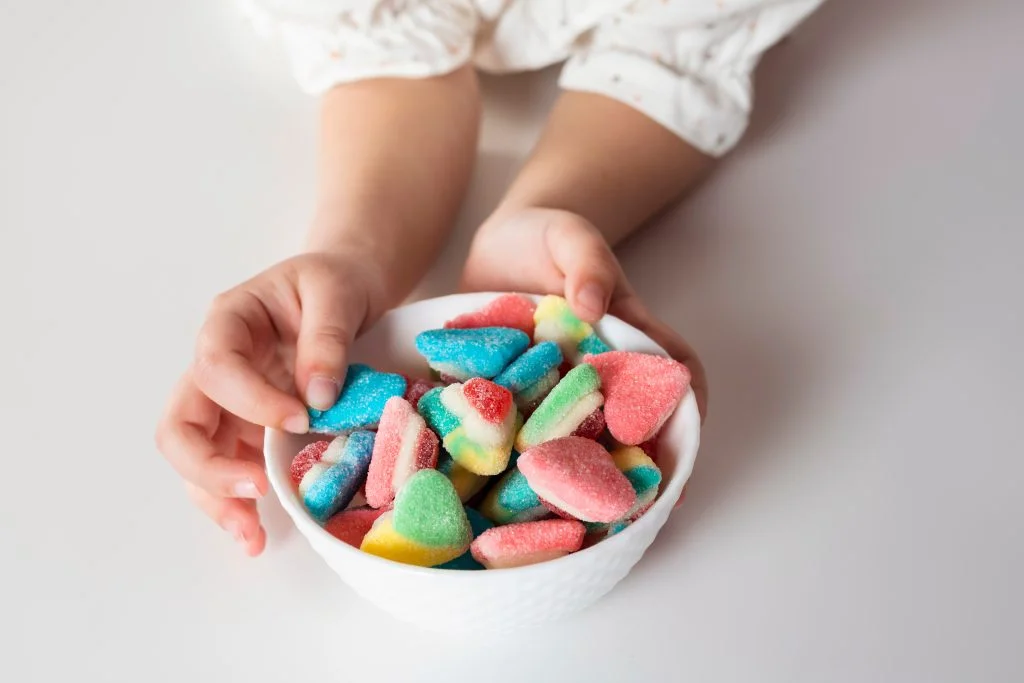
In fruity candies, for example, acids like citric or malic acid are often added to create a tangy contrast that enhances the fruit flavor and balances the sweetness. Finding the right balance between sweetness and acidity is key to creating a candy that is both flavorful and satisfying.
4. Ingredient Interactions and Flavor Masking
Another challenge in candy flavor development is dealing with ingredient interactions that can alter or mask intended flavors. Ingredients like fats, starches, or even colorants can interact with flavor compounds, changing the way they are perceived or reducing their intensity.
In chocolate, for instance, the natural fats can soften and mute certain flavors, requiring the use of more concentrated or potent flavor additives to achieve the desired taste.
Additionally, certain flavor compounds may react with each other in unexpected ways, leading to off-notes or an imbalanced flavor profile. Food scientists must carefully select compatible ingredients to ensure that the final candy delivers a clear and pleasant flavor.
5. Consistency and Shelf-Life
Maintaining flavor consistency over time is another significant challenge, especially for candies with long shelf lives. Flavors can degrade or change due to exposure to air, light, moisture, or temperature fluctuations during storage and distribution. For example, natural flavors derived from fruits may lose their freshness over time, while synthetic flavors tend to be more stable.
To ensure that the flavor remains consistent from the factory to the consumer’s hands, food scientists often conduct extensive shelf-life testing. They analyze how the flavor holds up under various conditions, adjusting the formula as needed to maintain its integrity and ensure that each piece of candy tastes as good as the first bite.
Additional Reading: Market trends — Clean Label
6. Adapting to Consumer Trends
The evolving preferences of consumers present another layer of complexity in candy flavor development. As demand for natural, clean-label, and plant-based ingredients grows, flavorists must find ways to meet these preferences without compromising on taste or product stability.
Natural flavors can be more difficult to work with due to their sensitivity to heat, light, and oxygen, but they are increasingly favored by health-conscious consumers.
At the same time, new trends in flavor innovation, such as combining savory and sweet flavors or experimenting with exotic fruit profiles, require continuous adaptation and experimentation in candy formulation. Candy makers must stay ahead of these trends while still meeting the technical demands of production and flavor consistency.
Overcoming these challenges requires a combination of scientific expertise, innovation, and an understanding of market demands. By carefully managing ingredient interactions, production techniques, and consumer preferences, flavor scientists can create flavors that are not only delicious but also consistent and reliable across every bite.

Conclusion
The process of creating candy flavors is a fascinating blend of art and science, involving everything from selecting key ingredients to understanding the complex chemistry of taste and flavor perception.
Through the use of reaction flavors, the skillful combination of natural and synthetic compounds, and the careful balance of sweetness, acidity, and texture, flavor chemists and candy makers craft the memorable flavors we love.
Despite the challenges posed by production processes and shifting consumer trends, the ability to create delicious and consistent candy flavors continues to evolve, bringing new and exciting tastes to the market.
If you’re looking to innovate in the world of candy production, or want to explore how expertly crafted flavors can elevate your products, the team of flavor scientists at Trilogy Flavors is a resourceful ally who studies the latest market trends and understands consumer insights. With decades of experience in natural flavor formulations, enhancers, and reaction flavors, we specialize in creating unique, high-quality flavors tailored to your specific needs.



